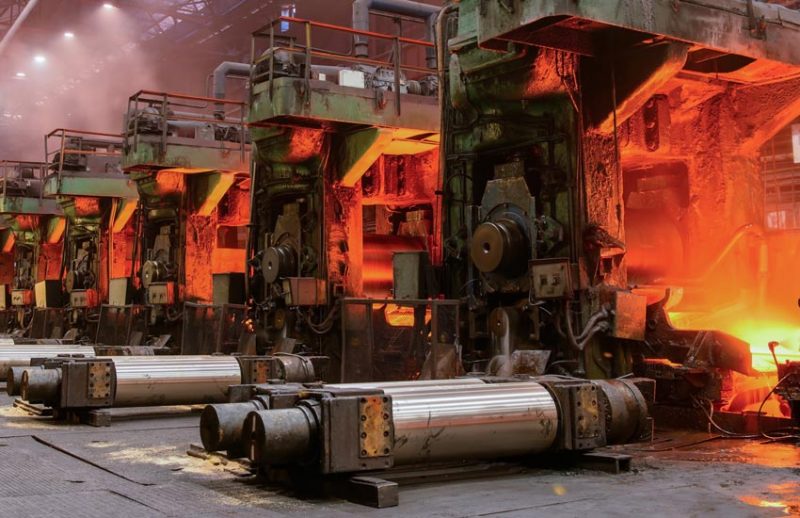
China’s steel industry faces significant challenges despite becoming the world leader in steel production. Over the past three decades, China achieved its ambitious goal. However, systemic issues like excess steelmaking capacity now hinder the sector’s growth. This overproduction crisis is not something Beijing can overcome in the short term.
The Source of Troubles in Chinese Steel Production
In early 2024, China’s steel production decreased by 1.5%, reaching 166.3 million tons. This aligns with S&P Global’s forecast, which predicts a 1% drop in annual production for 2025, totaling 996 million tons. The decline has been observed since 2021 and is often linked to a crisis in the housing construction sector. However, analyst Xinyi Shen from the Center for Research on Energy and Clean Air (CREA) states that real estate accounts for only 20% of steel consumption. Another 30% comes from infrastructure, with the largest share of 50% from industry. Therefore, while the housing crisis affects steel consumption, the manufacturing sector should help balance this, but it has not done so.
In 2024, car sales in China rose by 4.1%, reaching 31.4 million units. However, steel production fell by 1.7% to 1.005 billion tons. Despite strong growth in car production, steel output continued to slide. This indicates the larger issue of excess steel capacity, preventing the sector from meeting demand in industries like automotive manufacturing.
The Impact of Excess Capacity on Chinese Steel Exports
In 2024, China’s domestic steel consumption was 863 million tons, while steel production reached 1.005 billion tons, showing an excess of about 200 million tons. This overproduction is worsened by foreign markets’ resistance to cheap Chinese steel, leading to rising trade investigations and anti-dumping duties. From January to February 2025, countries like Vietnam, South Korea, and the EU imposed new duties on Chinese steel exports, further limiting China’s export opportunities.
In response, the National Development and Reform Commission (NDRC) announced plans to close plants with a total capacity of 50 million tons by the end of 2024, aiming to reduce 200 million tons of excess capacity by 2030. Despite these efforts, export prospects remain limited. The government’s attempt to clamp down on illegal practices, such as tax evasion, could improve the situation. However, rising tariffs from foreign markets will likely continue to diminish the export potential of Chinese steel.
The Financial Strain on China’s Steel Industry
Chinese steelmakers are facing significant financial pressure. In 2024, the net profit of steel industry members dropped by over 50%. Domestic prices for products like hot-rolled coils and rebar fell sharply over the year. This financial strain has led steelmakers to rely on substantial subsidies from both central and local governments, with subsidies accounting for up to 80% of the reported profits.
In early 2025, steelmakers continued reporting losses despite an increase in the price of hot-rolled coils. This suggests that the improvement in financial performance is not driven by real market forces. Government subsidies continue to support the industry, but the long-term sustainability of these measures is uncertain, especially as the government increasingly uses debt to support steelmakers.
Outlook for the Chinese Steel Market in 2025
Looking ahead, China’s steel industry faces a challenging year. The real estate sector is not expected to recover soon, with investment in housing construction falling by 9.8% in early 2024. This will negatively impact the demand for construction steel products such as rebar. On the other hand, the automotive sector is projected to continue growing, with new car sales expected to rise by 4.4% in 2025. While this growth could alleviate some pressure on the steel industry, excess capacity will likely prevent steelmakers from fully benefiting from the automotive sector’s demand.
In conclusion, China’s steel industry is at a critical juncture. Excess steelmaking capacity, trade barriers, and financial instability are key challenges. Although China’s steel industry still has some margin of safety, it is decreasing each year.











Leave a Reply
You must be logged in to post a comment.